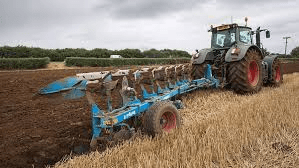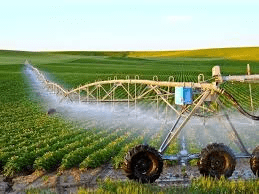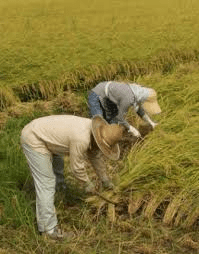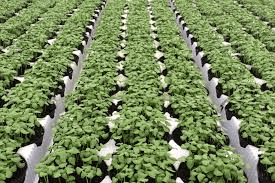Crop growth is influenced by various environmental and management factors that determine the success of agricultural production. Farmers must carefully consider these factors to ensure healthy plant development, higher yields, and overall success in farming. In this article, we will explore the key elements that affect crop growth, including climatic conditions, soil requirements, and water and irrigation needs.
Factors Influencing Crop Growth
Several factors impact how crops grow and develop. Knowing these factors helps farmers create the ideal environment for their plants.
1. Climate: Temperature, sunlight, and rainfall are crucial elements that influence plant growth. Each crop has specific temperature and light requirements, making it important to match crops with suitable climate conditions.
2. Soil: The type and condition of the soil affect how well crops can take up nutrients and grow. Healthy soil with the right structure, pH, and fertility is necessary for successful farming.
3. Water: Water is essential for plant growth, as it helps transport nutrients and supports cellular processes. The availability and distribution of water are crucial, and farmers must manage irrigation to avoid under- or over-watering.
4. Nutrients: Plants require nutrients like nitrogen, phosphorus, and potassium to grow. Soil fertility plays a role in providing these essential elements, and sometimes fertilizers are used to supplement nutrient levels.
5. Pest and Disease Control: Unchecked pests and diseases can cause significant damage to crops, leading to reduced yields. Effective management techniques, such as pest-resistant varieties and integrated pest management, help protect crops.
6. Farming Practices: The methods used in planting, weeding, and maintaining the crops also play a major role in their growth. Proper spacing, pruning, and timely harvesting all contribute to better crop health and production.
Climatic Conditions for Various Crops
Different crops thrive in different climatic conditions. Understanding the right climate for each crop helps farmers select what to grow and how to care for it.
1. Warm-season crops: These crops, like maize, rice, and tomatoes, require higher temperatures and plenty of sunlight. They grow best in tropical or subtropical climates where the temperature ranges between 20°C and 30°C.
2. Cool-season crops: Crops such as lettuce, peas, and spinach prefer cooler conditions. They grow well in temperate climates with temperatures between 10°C and 20°C. Planting these crops during the cooler months helps them thrive.
3. Rainfall: Some crops require more water, while others prefer drier conditions. For example, rice needs plenty of rainfall or irrigation to grow, while crops like sorghum and millet are drought-resistant and can survive with minimal water.
4. Frost sensitivity: Crops like corn, cucumber, and beans are sensitive to frost and can be damaged if exposed to freezing temperatures. On the other hand, crops like kale and cabbage are more frost-tolerant and can withstand colder conditions.
5. Light requirements: Sunlight is crucial for photosynthesis. Some crops, such as wheat and soybeans, need full sunlight to grow, while others like leafy greens (e.g., lettuce) can grow in partial shade. Farmers must ensure their crops receive the right amount of sunlight based on their growth needs.
Matching crops with the right climate conditions ensures better yields and helps prevent plant stress and diseases that can occur when crops are grown outside their ideal environment.
Soil Requirements for Different Crops

The soil in which crops grow plays a vital role in their overall health and production. Different crops require different soil types and conditions.
1. Soil texture: The texture of the soil (sand, silt, clay) influences its ability to retain water and nutrients. For example, root crops like carrots and potatoes prefer well-drained, sandy soils, while rice thrives in clayey soils that can hold water.
2. Soil pH: The acidity or alkalinity of the soil affects nutrient availability. Most crops grow best in slightly acidic to neutral soils, with a pH between 6.0 and 7.0. However, crops like blueberries prefer more acidic soils (pH 4.5 to 5.5).
3. Organic matter: Organic matter improves soil structure, increases fertility, and supports beneficial microorganisms. Adding compost or manure enriches the soil and supports crops like tomatoes, which benefit from nutrient-rich environments.
4. Soil fertility: Soil fertility refers to the availability of essential nutrients like nitrogen (N), phosphorus (P), and potassium (K). Nitrogen is essential for leafy growth, phosphorus for root and flower development, and potassium for overall plant health. Crops like corn, which have high nutrient demands, may require the addition of fertilizers to enhance soil fertility.
5. Drainage: Proper drainage is important to avoid waterlogging, which can damage crops like onions and garlic. Raised beds or well-draining soils are suitable for these crops. On the other hand, paddy rice requires waterlogged conditions to grow, so clay soils with poor drainage are ideal.
Knowing the specific soil requirements of each crop helps farmers amend their soil to provide the best growing conditions, whether by adjusting pH levels, improving drainage, or adding nutrients.
Read Also: Best Number of Ruminant Animals per Housing Unit for Fattening
Water and Irrigation Needs

Water is one of the most important factors in crop growth. Proper water management ensures that crops receive enough moisture without being overwatered or underwatered.
1. Water requirements: Different crops have different water needs. For example, crops like rice, sugarcane, and maize require more water, while crops like millet, sorghum, and sunflowers are more drought-tolerant and can thrive with less water.
2. Irrigation methods: Farmers use various irrigation methods to supply water to crops efficiently. These include:
i. Drip irrigation: This method delivers water directly to the plant’s roots, minimizing water loss through evaporation. It is suitable for water-sensitive crops like tomatoes and peppers.
ii. Sprinkler irrigation: Water is sprayed over the crops like rain, covering a large area. This method is effective for crops like wheat, barley, and vegetables.
iii. Surface irrigation: Water is allowed to flow over the soil surface and is used for crops like rice, which needs standing water during much of its growing period.
3. Water conservation: In regions with limited water resources, water-saving techniques are vital. Techniques like mulching (adding a layer of organic or synthetic material to the soil) help retain soil moisture. Farmers can also use rainwater harvesting to store water for future use.
4. Irrigation timing: Knowing when to irrigate is crucial. Overwatering can lead to root rot, while underwatering can cause stunted growth. Most crops need regular watering during their growth stage and less water as they approach maturity.
5. Drought management: In areas where droughts are common, farmers must choose drought-resistant crops and adopt practices like reduced tillage to conserve soil moisture. Crops such as cassava, millet, and sorghum are well-suited to drier climates.
Water is critical for crop growth, but farmers must balance the amount and timing of irrigation to ensure crops are healthy and productive while conserving water resources.
Nutrient Requirements and Fertilization
Nutrient requirements play a crucial role in the growth and development of crops. Plants need a balanced supply of essential nutrients to produce high yields and maintain health. These nutrients are divided into macronutrients (needed in larger quantities) and micronutrients (required in smaller amounts).
1. Macronutrients: Nitrogen (N), phosphorus (P), and potassium (K) are the primary macronutrients. Nitrogen supports leaf growth, phosphorus promotes root and flower development, and potassium helps with overall plant health. These nutrients are usually provided through fertilizers like NPK blends.
2. Micronutrients: Zinc, iron, copper, and boron are examples of micronutrients. Though required in small amounts, they are vital for healthy growth and enzyme functions in plants.
3. Fertilization strategies: Different crops have different nutrient requirements. Fertilizers should be applied based on soil tests, ensuring the right balance of nutrients. Organic fertilizers like compost or manure also enhance soil structure and provide slow-release nutrients.
4. Timing of fertilization: The timing of fertilizer application is critical. For example, nitrogen should be applied early in the growth stage, while phosphorus may be added at the time of planting to encourage strong root growth.
Proper nutrient management ensures that crops receive the nutrients they need for optimal growth, minimizing the risk of nutrient deficiencies or excesses.
Crop-Specific Cultivation Techniques
Each crop has unique requirements, and specific cultivation techniques must be adopted to maximize their yield and quality. Understanding these techniques helps farmers grow crops more efficiently.
1. Seed selection and preparation: Choosing high-quality seeds or seedlings that are resistant to pests and diseases is the first step in successful cultivation. For crops like maize, seeds are planted directly into the field, while crops like tomatoes are often started in nurseries before transplanting.
2. Planting methods: Proper spacing is critical for crops like rice and maize, ensuring that each plant has enough room to grow and access nutrients. For crops like cassava, cuttings are planted rather than seeds, requiring different handling techniques.
3. Soil preparation: Tilling or plowing the soil ensures it is well-aerated and free of weeds before planting. Some crops, like carrots, require fine, well-drained soil to support root development.
4. Pruning and thinning: In crops like tomatoes, pruning excess branches encourages fruit production. Thinning, where weaker plants are removed, is also essential for crops like carrots and beets to ensure enough space for healthy growth.
These crop-specific techniques help farmers tailor their approach to the needs of individual plants, improving productivity and quality.
Pest and Disease Control in Crop Production
Pests and diseases can severely damage crops, leading to reduced yields or even total crop failure. Effective pest and disease control is essential to protect crops and ensure high productivity.
1. Integrated Pest Management (IPM): IPM is a holistic approach that combines biological, cultural, and chemical controls to manage pests and diseases with minimal environmental impact. For example, using natural predators like ladybugs to control aphids is a biological method.
2. Crop rotation: Rotating crops helps break the life cycle of pests and diseases. For instance, alternating between cereal crops and legumes prevents the buildup of soil-borne diseases and pest populations.
3. Resistant varieties: Planting pest-resistant or disease-resistant crop varieties reduces the need for chemical interventions. For example, certain maize varieties are resistant to the destructive corn borer pest.
4. Chemical control: When necessary, pesticides and fungicides can be used, but it’s important to apply them judiciously to avoid harming beneficial organisms or causing resistance. Always follow recommended dosages and safety precautions.
5. Monitoring and early detection: Regularly checking crops for signs of pest infestations or disease outbreaks helps farmers take action early, preventing widespread damage.
Using these control methods ensures that crops are protected from harmful pests and diseases, leading to healthier plants and higher yields.
Read Also: Common Rabbit Diseases and How to Cure them
Harvesting and Post-Harvest Management

Once crops are fully grown, proper harvesting and post-harvest management are crucial to preserve their quality and ensure maximum value.
1. Timing of harvest: Crops must be harvested at the right time to ensure the best quality and yield. For example, grains like wheat and rice should be harvested when they are fully mature and dry, while fruits like tomatoes should be picked when ripe.
2. Harvesting techniques: Different crops require different methods of harvesting. Root crops like potatoes are carefully dug up to avoid damaging the tubers, while grains are often harvested using mechanized equipment like combine harvesters.
3. Post-harvest handling: After harvesting, crops must be handled carefully to avoid spoilage. For example, fruits like mangoes need to be handled gently to prevent bruising, while grains should be dried properly to avoid fungal contamination.
4. Storage: Proper storage is essential to extend the shelf life of harvested crops. For example, grains should be stored in dry, airtight containers to prevent moisture and pests from damaging them. Cold storage is used for perishable crops like fruits and vegetables to maintain freshness.
5. Transportation: Efficient transportation is crucial to get harvested crops to market while maintaining their quality. Proper packaging and cooling systems help preserve crops during transit, especially for exports.
Harvesting and post-harvest management are key to ensuring that the hard work put into growing crops is not wasted and that they reach consumers in the best possible condition.

